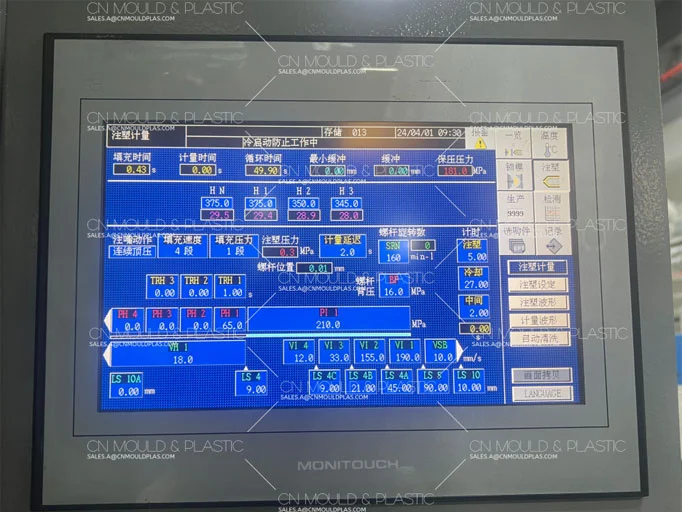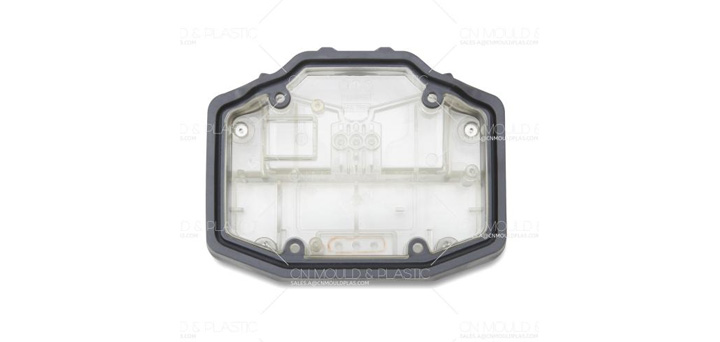Molding components refer to the mold parts that directly come into contact with plastic to form products, such as cavities, cores, sliding blocks, inserts, angle lifters, side core-pulls, etc.
The material of molding components is directly related to the mold's quality and service life, and determines the appearance and internal quality of plastic products. So, it must be chosen very carefully. Generally, based on the contract requirements, the right material is selected according to the product and mold requirements and characteristics.
The principles for choosing materials for molding components are as follows: depending on the type of plastic being molded, the product's shape, dimensional accuracy, appearance quality, usage requirements, and production batch size. At the same time, we need to consider the material's performance in cutting, polishing, welding, texturing, deformation, and wear resistance. Also, factors like cost-effectiveness, mold manufacturing conditions, and processing methods are taken into account to select different types of steel.
For molds used to form transparent plastic products, both the cavity and core need to use high-grade imported steel with excellent mirror polishing performance, such as 718 (P20 + Ni type), NAK80 (P21 type), S136 (420 type), H13 type steel, etc. Among them, 718 and NAK80 are in a pre-hardened state and don't require further heat treatment. S136 and H13 type steels are in an annealed state, with a hardness usually between HB160~200. After rough machining, they need vacuum quenching and tempering. The hardness of S136 is generally HRC40~50, and that of H13 type steel is usually HRC45~55 (which can be determined according to specific grades).

For molds that require high product appearance quality, long service life, and mass production, the material selection requirements for molding components are as follows:
① The cavity needs to use high-grade imported steel with excellent mirror polishing performance, such as 718 (P20 + Ni type), NAK80 (P21 type), etc. These are all pre-hardened and don't need further heat treatment. The surface should undergo nitriding treatment, with a nitrided layer depth of 0.15~0.2mm and a hardness of HV700~900.
② The core can use mid-to-low grade imported P20 or P20 + Ni type steels, such as 618, 738, 2738, 638, 318, etc., all in pre-hardened state. For molds with small production batches, domestic plastic mold steel or imported high-quality carbon steel like S50C, S55C can also be used.
For products with general appearance quality requirements, the material selection requirements for molding components are:
① For small, precision molds, both the cavity and core should use mid-grade imported P20 or P20 + Ni type steels.
② For large and medium-sized molds, if the plastic being molded has no special requirements for steel, the cavity can use mid-to-low grade imported P20 or P20 + Ni type steels; the core can use low-grade imported P20 type steels, imported high-quality carbon steel like S50C, S55C, or domestic plastic mold steel.
③ For cavities that need to be textured, try to avoid using the P20 + Ni type 2738 (738) when texturing.
For internal structural parts with no appearance quality requirements and when the molding material has no special requirements for steel, the material selection requirements for molding components are:
① For large and medium-sized molds, the cavity can use low-grade imported P20 or P20 + Ni type steels, imported high-quality carbon steel like S55C, S50C, or domestic P20 or P20 + Ni type plastic mold steel; the core can use imported or domestic high-quality carbon steel.
② For small molds with high output and complex structures, the cavity can use low-grade imported P20 or P20 + Ni type steels, or domestic P20 or P20 + Ni type plastic mold steel; the core can use domestic plastic mold steel.
③ For small molds with simple structures and low output, both the cavity and core can use domestic plastic mold steel or high-quality carbon steel.
When molding plastics containing corrosive elements like fluorine and chlorine, or various plastics with flame retardants added, if the product requirements are high, the internal mold can use imported corrosion-resistant steel, such as S136 quenched to HRC50~52; for general requirements, domestic corrosion-resistant steel can be used.
For molds used to inject plastics that cause strong friction and impact on steel—for example, molds for nylon + glass fiber materials—imported or domestic H13 type steel with high wear resistance, high heat-resistant tensile strength, and high toughness should be used; SKD11 is also an option, quenched to HRC56~58.
Molding inserts generally use the same material as the part they are inserted into. For parts of the mold that are difficult to cool or require high cooling efficiency, the insert material should be beryllium copper or aluminum alloy.
For the material selection of moving parts involved in molding in the mold:
① Transparent parts should use high-grade imported steel with good polishing performance, such as 718, NAK80, etc.
② For non-transparent parts, mid-grade imported steel with high hardness and strength is generally used, such as 618, 738, 2738, 638, 318, etc. The surface should undergo nitriding treatment, with a nitrided layer depth of 0.15~0.2mm and a hardness of HV700~900.
③ If the mold requirements are low, low-grade imported steel or domestic steel can be used, with a nitriding hardness generally between HV600~800.
The principles for selecting hard mold materials are:
① When corrosion resistance is required, choose S136, quenched to HRC50~52.
② For molds that need to handle fiber materials and require wear resistance, SKD11 is a good choice, quenched to HRC56~58.
③ For moving parts that need wear resistance, such as angle lifters and push blocks, 8407 can be used, quenched to HRC43±2, then nitrided for use.
④ A cheaper hard mold option is W302, quenched to HRC50~52.
⑤ For high-life molds, M2 steel can be considered.

